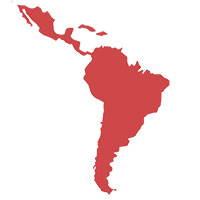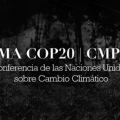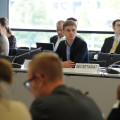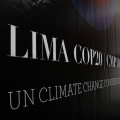Another clunky acronym was introduced into the negotiating process at the Warsaw climate conference in December last year. “Intended Nationally Determined Contributions” or INDCs are the latest addition to the quagmire of climate change abbreviations.
They’re meant to reflect the intended efforts signatory countries to the UN convention on climate change, UNFCCC, are willing to make to tackle climate change. These goals must be seen in the context of a highly anticipated global climate agreement to be signed in Paris in December 2015.
Countries agreed in Warsaw to share their INDCs “well in advance” of the pivotal Paris conference next year in order to build trust and allow comparison of each country’s individual efforts. Countries will have to show their cards over the course of next year. March 2015 is currently the initial deadline that has been set for developed countries, which has led to the UNFCCC organising an intercessional for February, a mere two months after COP20.
This requirement is particularly salient because it applies to both developed and developing countries; a break from a convention that required different commitments from developed and developing countries. The actual content of these INDCs will nevertheless differ markedly depending on national circumstances.
Heated discussions are currently taking place between developed and developing economies as to whether these intended contributions should only reflect efforts to reduce greenhouse gas emissions, or whether they should include action on adaptation, finance, capacity-building, and technology transfer.
These additional issues are just as urgent for developing countries already experiencing the disastrous effects of a changing climate as preventing future climate change. Developing countries are also wary of losing leverage if they make concessions on carbon mitigation before securing agreement on these other elements.
While countries debate the scope of their commitments, a much bigger problem looms. There is near certainty that the aggregate of these INDCs will fall short of what is needed to stop dangerous climate change. The best case scenario is generally equated to a maximum temperature rise of 1.5°C or 2°C above pre-industrial levels, and is the entire raison d’etre of the climate process.
Because INDCs are explicitly self-determined, the preferred approach for countries is to jealously guard their sovereignty and national interests, but this is problematic for encouraging collective ambition.
As a consequence, many at the Lima talks believe that the Paris agreement may not be robust enough to prevent temperatures rising beyond 2°C.
Discussions are now underway for the inclusion of an assessment and review mechanism in the Paris agreement that will either stimulate or compel parties to progressively ratchet up their commitments in coming years. However, the same countries that strongly favour bottom-up development of mitigation efforts are also opposed to a robust international assessment of their adequacy.
The alternative, relying on commitments that are purely nationally-determined to stave off global warming, is an enormous gamble. When dealing with the future of our planet, that’s not a risk we can take.













comment